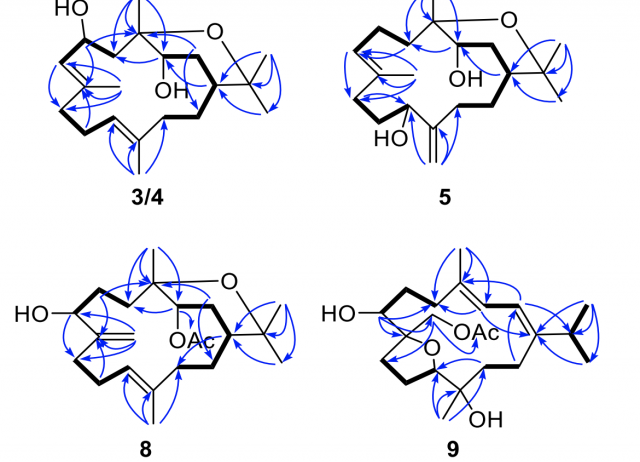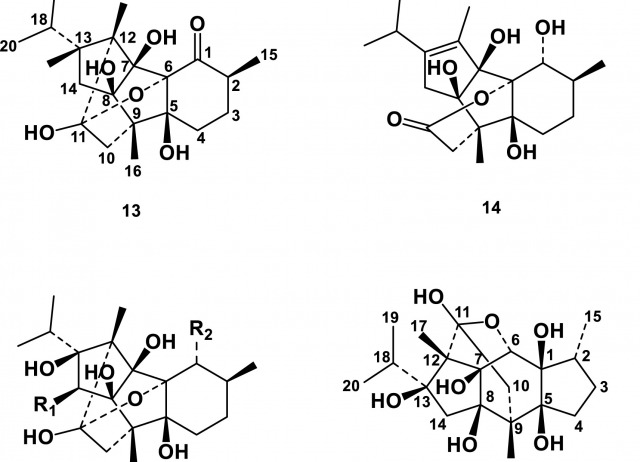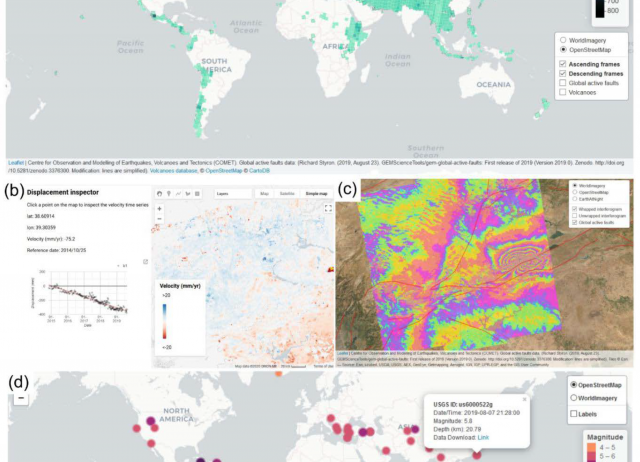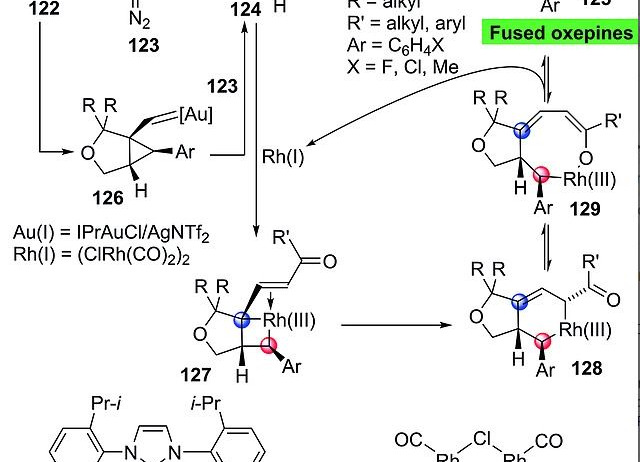Control of invasive ring-necked parakeet (Psittacula krameri) in an island Biosphere Reserve (La Palma, Canary Islands): combining methods and social engagement
| The ring-necked parakeet (Psittacula krameri) has been naturalised in La Palma Island Biosphere Reserve since the late 1990s. Due to landowners’ complaints about the impact of parakeets on crops, a control scheme was implemented to eliminate the known population, initially estimated at 70 birds. The programme finally comprised three different phases. Between December 2015 and September 2016, 107 parakeets were removed by trapping using 14 decoy traps. Due to inefficient handling and trap shyness developed by the parakeets, traps were removed from October 2016 to November 2017, with at least 20 parakeets remaining in the wild. The control measures restarted in December 2017; 34 parakeets were counted and 13 were trapped. Since the parakeets had started to breed, the method was changed from trapping to shooting, to remove the last 34 parakeets. In total, during the entire project (December 2015–May 2018), 175 ring-necked parakeets were managed: 154 removed from the environment, 1 handed over to the project staff, and 20 registered by authorities as pets. Considering the undetermined number of ring-necked parakeets kept as pets on the island, an early detection and rapid response system has been set up by the island council, engaging public workers and volunteers to investigate and control new escapes. This project is one of the few cases worldwide where naturalised breeding populations of this invasive species have been successfully eliminated from the environment. Negative effects on biodiversity and human interests were thus minimized, and especially important, this was achieved without generating any social conflict. |
Saavedra, Susana; Medina, Félix M.
Patrimonios y culturas del vino en riesgo de desaparición: el caso de As Adegas do Viño do País (Betanzos, Galicia)
Las Adegas do Viño do País son establecimientos propios de la comarca de Betanzos (noroeste de Galicia, España) en los que se permite vender el excedente de la producciónMvinícola anual por parte de sus productores. Estos locales, cuyos orígenes remontan al periodo medieval, forman parte de la tradición y la cultura del vino contemporánea de la zona, donde las personas acuden a degustar el vino del año y llevan comida para compartir. Pese a la relevancia histórica, cultural y patrimonial de estos espacios, actualmente corren el riesgo de desaparecer. El presente estudio analiza, con perspectiva etnográfica, mediante aproximación sociológica y en línea con los estudios críticos del patrimonio, los factores socioculturales que emplazan a esta tradición al borde de la desaparición. Los resultados muestran una cultura vitícola singular y, por tanto, una oportunidad de favorecer su continuidad mediante su diferenciación, es decir, la adaptación de esta tradición a la modernidad fundamentada en el estudio de las Adegas do Viño do País.
Togores Hernani, José Ramón; Parga-Dans, Eva; Diz, Carlos
Can Immunization of Hens Provide Oral-Based Therapeutics against COVID-19?
In the current worldwide pandemic situation caused by the Severe Acute Respiratory Syndrome Coronavirus 2 (SARS-CoV-2) and the newest coronavirus disease (COVID-19), therapeutics and prophylactics are urgently needed for a large population. Some of the prophylaxis strategies are based on the development of antibodies targeting viral proteins. IgY antibodies are a type of immunoglobulin present in birds, amphibians, and reptiles. They are usually obtained from egg yolk of hyper-immunized hens and represent a relatively inexpensive source of antibodies. Specific IgY can be produced by immunizing chickens with the target antigen and then purifying from the egg yolk. Chicken IgY has been widely explored as a clinical anti-infective material for prophylaxis, preventive medicine, and therapy of infectious diseases. Administered non-systemically, IgY antibodies are safe and effective drugs. Moreover, passive immunization with avian antibodies could become an effective alternative therapy, as these can be obtained relatively simply, cost-efficiently, and produced on a large scale. Here, we highlight the potential use of polyclonal avian IgY antibodies as an oral prophylactic treatment for respiratory viral diseases, such as COVID-19, for which no vaccine is yet available.
Pérez de Lastra, José Manuel; Baca-González, Victoria; Asensio-Calavia, Patricia; González-Acosta, Sergio; Morales-delaNuez, Antonio
Rare new bicyclic cembranoid ethers and a novel trihydroxy prenylated guaiane from the Xisha Soft Coral Lobophytum sp
Seven new cembrane-type diterpenes, lobophytolins C–I (3–9), and one new prenylated-guiane-type diterpene, lobophytolin J (10), along with six known related ones (1, 2, 11–14), have been isolated from the soft coral Lobophytum sp. collected off the Xisha Island in the South China Sea. Their structures were elucidated by extensive spectroscopic analysis and quantum mechanical (QM)-NMR methods. The absolute configuration of lobophytolin H (8) was determined by the application of the modified Mosher’s method and chemical transformation. Lobophytolin D (4) exhibited promising cytotoxicities in in vitro bioassays against HT-29, Capan-1, A549, and SNU-398 human cancer cell lines with IC50 values of 4.52, 6.62, 5.17, and 6.15 μM, respectively.
Li, Song-Wei; Cuadrado, Cristina; Huan, Xia-Juan; Yao, Li-Gong; Miao, Ze-Hong; Hernández Daranas, Antonio; Guo, Yue-Wei
Are Vaccines the Solution for Methane Emissions from Ruminants? A Systematic Review
Ruminants produce considerable amounts of methane during their digestive process, which makes the livestock industry as one of the largest sources of anthropogenic greenhouse gases. To tackle this situation, several solutions have been proposed, including vaccination of ruminants against microorganisms responsible for methane synthesis in the rumen. In this review, we summarize the research done on this topic and describe the state of the art of this strategy. The different steps implied in this approach are described: experimental design, animal model (species, age), antigen (whole cells, cell parts, recombinant proteins, peptides), adjuvant (Freund’s, Montanide, saponin, among others), vaccination schedule (booster intervals and numbers) and measurements of treatment success (immunoglobulin titers and/or effects on methanogens and methane production). Highlighting both the advances made and knowledge gaps in the use of vaccines to inhibit ruminant methanogen activity, this research review opens the door to future studies. This will enable improvements in the methodology and systemic approaches so as to ensure the success of this proposal for the sustainable mitigation of methane emission.
Baca-González, Victoria; Asensio-Calavia, Victoria; González-Acosta, Sergio; Pérez de Lastra, José Manuel; Morales-delaNuez, Antoni
The limited spatial scale of dispersal in soil arthropods revealed with whole‐community haplotype‐level metabarcoding
Soil arthropod communities are highly diverse and critical for ecosystem functioning. However, our knowledge of spatial structure and the underlying processes of community assembly are scarce, hampered by limited empirical data on species diversity and turnover. We implement a high‐throughput sequencing approach to generate comparative data for thousands of arthropods at three hierarchical levels: genetic, species and supra‐specific lineages. A joint analysis of the spatial arrangement across these levels can reveal the predominant processes driving the variation in biological assemblages at the local scale. This multihierarchical approach was performed using haplotype‐level COI metabarcoding of entire communities of mites, springtails and beetles from three Iberian mountain regions. Tens of thousands of specimens were extracted from deep and superficial soil layers and produced comparative phylogeographic data for >1,000 codistributed species and nearly 3,000 haplotypes. Local assemblage composition differed greatly between grasslands and forests and, within each habitat, showed strong spatial structure and high endemicity. Distance decay was high at all levels, even at the scale of a few kilometres or less. The local distance decay patterns were self‐similar for the haplotypes and higher hierarchical entities, and this fractal structure was similar in all regions, suggesting that uniform processes of limited dispersal determine local‐scale community assembly. Our results from whole‐community metabarcoding provide insight into how dispersal limitations constrain mesofauna community structure within local spatial settings over evolutionary timescales. If generalized across wider areas, the high turnover and endemicity in the soil locally may indicate extremely high richness globally, challenging our current estimations of total arthropod diversity on Earth.
Arribas, Paula; Andújar, Carmelo; Salces-Castellano, Antonio; Emerson, Brent C.; Vogler, Alfried P.
The importance of threatened host plants for arthropod diversity: the fauna associated with dendroid Euphorbia plants endemic to the Canary and Madeira archipelagos
The arthropod fauna associated with seven endemic dendroid Euphorbia was sampled and studied in the Canary and Madeira archipelagos. The stem-diameter of the plants was considered, along with their genetic affinity, habitat and number of localities and islands where present. The arthropod assemblages and richness found on each Euphorbia species were statistically analysed, to determine which variables influenced the survey results. A total of 179 arthropod species were found, identified, and classified into characteristic or accompanying fauna, according to their relationship with the plants and their types of diet. Faunal assemblages and arthropod species richness differed among the Euphorbia species, each thus showing a strong and almost unique host relationship. Species richness increased with the architectural complexity of the host-plant species and number of localities and islands where present. The similarity of faunal assemblages was mainly related to stem diameter. Among diet types, a great number of exclusive and/or endemic taxa associated with this plant genus were xylophages. Our survey revealed that rich arthropod communities are associated with the genus Euphorbia, especially on its rare endangered species, and highlights the need to protect their host plants. This in turn will contribute to the conservation of their arthropod communities and their ecosystem functions.
Hernández-Teixidor, David; Santos, Irene; Suárez, Daniel; Oromí, Pedro
Alkane-, alkene-, alkyne-γ-lactones and ryanodane diterpenes from aeroponically grown Persea indica roots
This work presents the study of the roots of the Macaronesian paleoendemism Persea indica (L.) Spreng. The root biomass of this protected tree species has been produced by soil-less aeroponic culture under controlled environment. This system has important advantages over traditional plant production techniques because it provides opportunities to optimize the yield of metabolite production under well-controlled conditions, thereby facilitating commercial-scale production of bioactive compounds. Thus, for the first time a study of this type has permitted the isolation from the roots of seven undescribed dextrorotatory lactones: the alkane-γ-lactones (+)-majoranolide and (+)-dihydromajorenolide, the alkene-γ-lactones (+)-majorenolide and (+)-majorenolide acetate, and the alkyne-γ-lactones, (+)-majorynolide, (+)-majorynolide acetate and (+)-isomajorynolide. In addition, thirteen known compounds were also isolated including two possible avocadofurane precursors, avocadynone acetate and avocadenone acetate, the monoterpene esters cis- and trans-p-coumarate of (−)-borneol, and the ryanoid diterpenes cinnzeylanone, anhidrocinnzeylanine, cinnzeylanine, cinnzeylanol, epiryanodol, perseanol, cinncassiol E, perseaindicol and secoperseanol. The configuration at C-14 de two ryanodane diterpenes has also been revised in this work. Furthermore, (−)-borneol cis-p-coumarate has showed to be insecticidal to S. littoralis and cytotoxic to insect (Sf9) cells, (+)-majorenolide antifeedant to aphids and cytotoxic to Sf9, cinnceylanol antifeedant and insecticidal to S. littoralis, and (+)-majorynolide (2), insecticidal against S. littoralis, cytotoxic to Sf9 and nematicidal, suggesting a defensive role for these compounds.
Fraga, Braulio M.; Díaz, Carmen E.; Bolaños, Patricia; Bailén, María; Andrés, María Fe; González-Coloma, Azucena
LiCSAR: An Automatic InSAR Tool for Measuring and Monitoring Tectonic and Volcanic Activity
Space-borne Synthetic Aperture Radar (SAR) Interferometry (InSAR) is now a key geophysical tool for surface deformation studies. The European Commission’s Sentinel-1 Constellation began acquiring data systematically in late 2014. The data, which are free and open access, have global coverage at moderate resolution with a 6 or 12-day revisit, enabling researchers to investigate large- scale surface deformation systematically through time. However, full exploitation of the potential of Sentinel-1 requires specific processing approaches as well as the efficient use of modern computing and data storage facilities. Here we present LiCSAR, an operational system built for large-scale interferometric processing of Sentinel-1 data. LiCSAR is designed to automatically produce geocoded wrapped and unwrapped interferograms and coherence estimates, for large regions, at 0.001° resolution (WGS-84 system). The products are continuously updated in a frequency depending on prioritised regions (monthly, weekly or live update strategy). The products are open and freely accessible and downloadable through an online portal. We describe the algorithms, processing, and storage solutions implemented in LiCSAR, and show several case studies that use LiCSAR products to measure tectonic and volcanic deformation. We aim to accelerate the uptake of InSAR data by researchers as well as non-expert users by mass producing interferograms and derived products.
Lazecký, Milan; Spaans, Karsten; González, Pablo J.; Maghsoudi, Yasser; Morishita, Yu; Albino, Fabien; Elliot, John; Greenall, Nicholas; Hatton, Emma; Hooper, Andrew; Juncu, Daniel; McDougall, Alistair; Walters, Richard J.; Watson, C. Scott; Weiss, Jonathan R.; Wright, Tim J.
Synthesis of Seven Membered Oxacycles: Recent Developments and New Approaches
This minireview focuses on recent advances in the synthesis of seven‐membered ring oxacycles, whether saturated, unsaturated, fused or isolated. We cover a remarkable variety of strategies and methods developed during the past two decades, based mainly on cyclizations, ring‐closing metathesis, conjugate additions, and ring expansions. The cyclizations can be generated directly or triggered through an oxocarbenium ion, carbocation or iminium‐type species. Also discussed are ring‐closing metatheses and conjugate additions, in which the precursor has the functionalities and correct stereochemistry of the final seven‐membered ring oxacycle. Finally, examples of ring expansions are described, predominantly involving cyclopropanes and epoxides. These cases include reactions governed by the intermediate species and others, where the precursor holds the stereochemical information for the final oxacycle.
Sinka, Victoria; Martín, Víctor S.; Cruz, Daniel A.; Padrón, Juan I.



